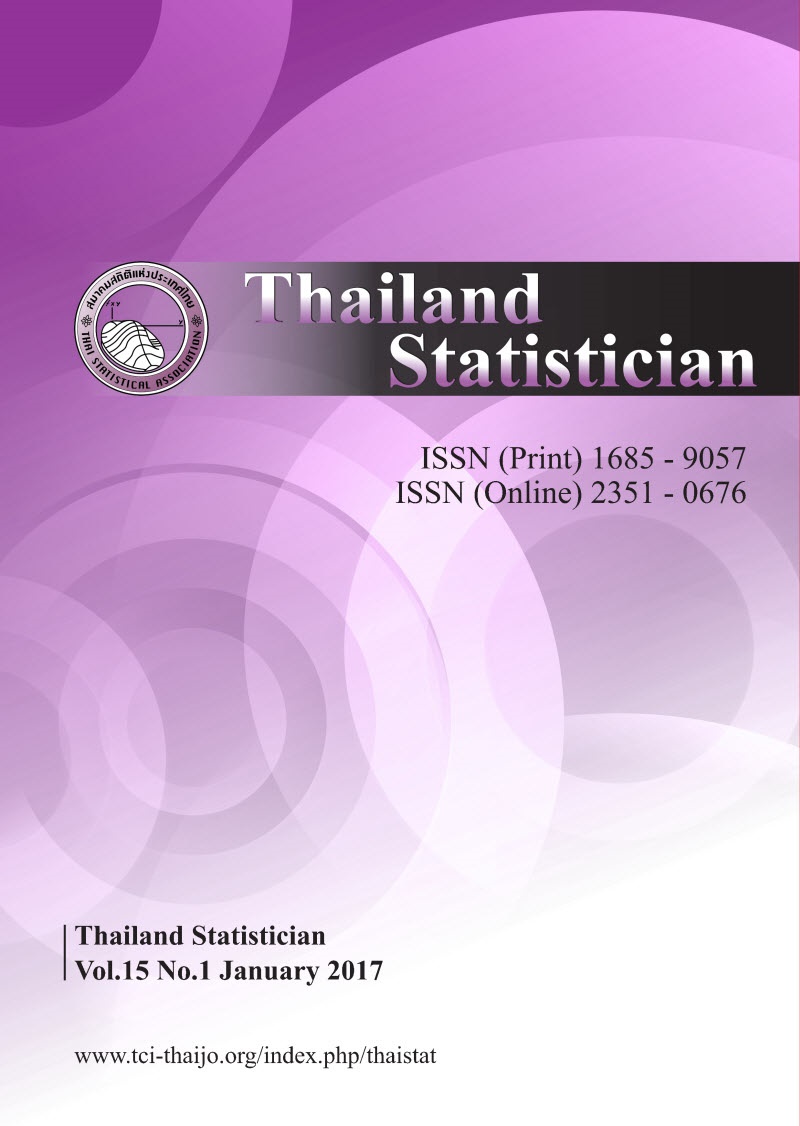Investigation of Variance Estimators for Adaptive Cluster Sampling with a Single Primary Unit
Keywords:
adaptive cluster sampling, systematic sampling, variance estimationAbstract
In adaptive cluster sampling design, the initial sample is considered in terms of primary and secondary sampling units. The secondary sampling units being arranged in systematic or strip pattern. The problem of unbiased variance estimation occurs when a single primary sampling unit is selected; consequently, the objective of this study is to introduce three alternative estimators of the variance of unbiased estimator of the population mean proposed by Thompson [1] for the design of adaptive cluster sampling. All three new variance estimators are performed based on the method of splitting the sample and regarding the sample as a stratified sample of equal size and a simple random sample. The numerical study is carried out with real blue-wing teal data in order to investigate the properties of the variance estimators. These three variance estimators are compared to each other empirically in terms of relative bias, MSE and relative frequency of coverage the population mean of 95% confidence interval that is formed by each variance estimator. In addition, all three estimators are also compared to other variance estimators in systematic sampling. The confidence interval containing the population mean is performed based on the assumption of asymptotic normality.Downloads
How to Cite
Netharn, U. (2015). Investigation of Variance Estimators for Adaptive Cluster Sampling with a Single Primary Unit. Thailand Statistician, 7(2), 101–129. retrieved from https://ph02.tci-thaijo.org/index.php/thaistat/article/view/34299
Issue
Section
Articles




